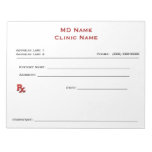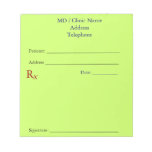Unfortunately, engaging patients with a portal is no easy task, says Vanessa Bisceglie, MBA, BS, CMCO, PMP, NCP, CEO and president of CareVitality, Inc. in Chicago. Nearly 66% of respondents said the most significant portal-related challenge is simply getting patients to sign up, according to a 2017 Physicians Practice Tech Report.
The problem is that many portals don’t give patients what they want—either because the portal vendor doesn’t offer the functionality or because physicians choose not to activate certain features out of fear that they won’t see a return on investment, says Bisceglie.
Although Meaningful Use spurred the adoption of EHRs, it didn’t do much in the way of increasing portal usage, says Bisceglie. Physicians who launched a basic portal for Meaningful Use struggled to engage 5% of their patients—the minimum number necessary to satisfy Stage 2 requirements. This lack of patient engagement could be why the federal government eventually revised these measures, she adds. According to modified Stage 2 requirements, only one patient needed to electronically view, download, or transmit his or her information to a third party during the EHR reporting period.
What portal features might increase patient engagement? According to research conducted by Software Advice, patients using a portal most often want the ability to:
- Schedule appointments (24%)
- View test/lab results (22%)
- View bills/make payments (21%)
Bisceglie says other popular features include:
- the ability to securely communicate with providers
- enter patient data
- access medical records and clinical summaries
- refill prescriptions
- fill out registration forms
Once patients engage with the portal, the technology has the potential to not only reduce administrative costs but also improve outcomes, the latter of which is an important consideration for physicians participating in MACRA and other value-based payment initiatives, says Bisceglie.
Here are four tips to help physicians engage patients with their practice’s portal:
1. Educate patients about the portal
Practices that take the time to develop flyers about the portal and its benefits are more likely to experience patient buy-in, says Bisceglie. Provide these flyers upon check-in, and ensure that front-office staff can answer any questions. There are also other ways to subtly remind patients about the portal. For example, consider this automated message while patients wait on hold when dialing the receptions:
“If you’re unable to wait, please be aware that you can access the portal 24/7 to complete many tasks.”
2. Focus on initial activation
Don’t give patients a URL with instructions on how to activate their portal because they won’t do it, says Bisceglie. Instead, ask patients to provide their email address so you can sign them up for the portal while they wait to see the physician. Then ask them to check their email using their smartphone to ensure they received the invite. Ideally, practices would also walk patients through the activation process, including choosing a password and logging in for the first time, she adds.
3. Activate as many features as possible
The more patients can accomplish using the portal, the more likely they’ll be to sign on, says Bisceglie. This requires going beyond simply providing the ability to view lab results, which is where many portals stop short, she adds.
4. Involve physicians
When physicians encourage patients to log onto the portal and view lab results or pose questions, this reiterates that the portal is an important communication tool.
Primary Health Medical Group, an 11-clinic independent medical group in southwest Idaho that uses secure messaging through its portal, provides simple talking points to educate patients, including:
Do you use e-mail? The portal is just a secure e-mail system that we can use to communicate.
You can send me a message and it goes right into your chart, so I have all of your information at hand when I read it and respond.
If you use it and don’t like it, you don’t have to continue to use it. Just let us know.
It’s really very easy to use. If you use the Internet, you’ll most likely find the portal helpful and easy to navigate.
Also don’t forget that portals aren’t going to work for every population, says Bisceglie. For example, patients in rural areas, those who are not tech savvy, or those who don’t have an email address probably won’t engage with the portal regardless of the practice’s efforts. It’s all about knowing your patients and giving them what they want, she adds.
Making the Most of Your Portal
Here are some additional tips to capitalize on your practice’s portal:
- Activate online bill pay to accelerate cashflow.
- Allow refill requests to increase medication adherence.
- Provide medical record access to reduce requests for information.
- Provide online registration to reduce wait times and increase patient satisfaction.
- Provide online scheduling options to reduce call volume.
- Quickly respond to patient inquires via secure messaging to reduce uncompensated time.
- Send educational materials and reminders to schedule preventive care appointments (e.g., flu shots, wellness visits, or annual physicals) to improve outcomes and keep patients engaged.
A thoughtful approach to portal implementation helps practices maximize efficiencies says Bisceglie. “Think of it as a tool that will increase efficiencies within your office while potentially decreasing costs,” she adds. “The better you are at enabling the portal and positioning it to your patients, the more likely you’ll have these operational and cost efficiencies.”




Thanks for sharing this useful information with us. This is really so helpful for us.
ReplyDeleteIf you are looking for any help related to Netgear router password recovery, you can visit our site . It is one of the best third-party service providers which provides Netgear Router Support. You can contact us through live chat or can drop us a mail.
netgear router support
extender support